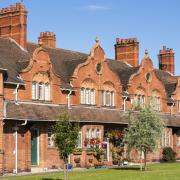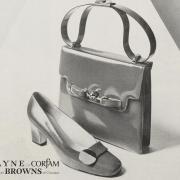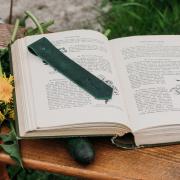A supreme English flat race jockey who was to win the Derby no fewer than six times, Steve Donoghue was the equine protagonist of the 1910s and ‘20s.
Born in Aikin Street, Warrington on November 8, 1884, Donoghue (birthname Donohue) was the eldest of five (three sons, two daughters) of steelworker or iron puddler Patrick Donohue and Mary née Mitchell, a family of Irish ancestry but having no connection with the horseracing business whatsoever. Educated at St Stephen’s Roman Catholic School, Warrington until the age of 12, Stephen (Steve) then began working part-time at the steelworks to help the family coffers, which were forever depleted because his father, ironically, liked a flutter on the gee-gees. Steve then decided, aged 14, to try his hand at becoming a jockey based simply on the feelgood factor of winning a circus competition for riding a donkey. By such fates are great careers born.
His early career was checkered. Apprenticed in Chester, having walked all the way to the Roodee racecourse, beaten for permitting a horse to escape, homesick and returning to Warrington to find employment in a wire works, absconding, then apprenticed again, he ended up in France where he rode his first winner in 1905 at Hyères, before a move to Ireland (1907).

He really made his name in Ireland, where with his Irish ancestry and early success he was regarded as one of their own. He rode around 20 winners in that first year and then became the top Irish jockey in 1908 with 46 winners, a red-letter year for the aspiring jockey as he was also married to Bridget Behan, the daughter of a racehorse owner, a union that bestowed two sons and a daughter. They divorced in 1917. Success followed success meanwhile as Donoghue swept up the Irish Oaks (1908) and Irish Derby (1909) becoming top Irish jockey again in that year. He returned to England in 1911 when he obtained a stable jockey position and had his first major successes riding The Tetrarch in 1913, a horse that was reputedly jet-propelled. He also nipped across to Ireland in 1913 and ’14 to bag their Derby twice more, two of the 11 Irish Classics he scooped.
The first of 10 successive occasions when Donoghue became British Champion Jockey occurred in 1914, the last of them in 1923. Donoghue rode a total of 946 winners over that decade. He undoubtedly would have topped 1,000 but for the intervention of WW1, which reduced the number of meetings in four of those 10 seasons. The most winners he rode was the 143 over the 1921 season while his final championship (1923) was actually shared with Charlie Elliott (1904-79). It was the only one of the 10 he didn’t win outright.

Donoghue won the Derby for the first time in 1915 aboard Pommern. He’d follow this up with further wins on Gay Crusade’ (1917), Humorist (1921), Captain Cuttle (1922), Papyrus (1923), and Manna (1925). Donoghue rode the Epsom racecourse’s Tattenham Corner so well that the standing joke was that he must have had his left leg hooked over the railings. He might have had a further success as he was offered the ride on April the Fifth (1932) but declined. The horse won but without Donoghue astride. Success brought rewards and Donoghue was able to afford a large house with chauffeur, gardener and cook. He also had a flat in Park Lane with a housekeeper and valet. He even began a relationship wit Lady Torrington, the stable owner and actress Eleanor Souray, who left the jockey a painting of her horse by the fashionable equine artist Sir Alfred Munnings. To be fair though, Donoghue had been bankrolling her extravagant lifestyle.
As well as his six Derby wins Donoghue also prevailed in the other races that make up the five British Classics. The Derby is one of two Classics contested at Epsom, the other being the Oaks, which the took twice. He also won the 2,000 Guineas Stakes and 1,000 Guineas Stakes on three occasions and once respectively, both of these contested at Newmarket, and finally, he picked up the laurels twice in the St Leger Stakes (Doncaster) which brought his total number of Classics wins to 14. Donoghue rode a number of horses to victory in more than one Classic, namely Pommern and Gay Crusader (Derby, 2,000 Guineas and St Leger) Exhibitionist (1,000 Guineas and Oaks), and Manna (Derby and 2,000 Guineas). Winning three Classics on a single horse in a single season is a rarity, so achieving this twice on Pommern (1915) and Gay Crusader (1917) really set Donoghue apart. Those successes clinched the so-called Triple Crown of Classics (Derby, 2,000 Guineas and St Leger). Donoghue remains the only jockey to have achieved this notable feat twice in more than 200 years of it being achievable.
Those 14 successes, laudable as they were, placed him some way behind Lester Piggott (1954-92) who raced to victory a total of 40 times. Donoghue was ever popular with racegoers, the punters’ roar on the racecourse being: ‘Come on Steve.’ Owners and trainers were less keen as Donoghue tended to switch stables when he saw a better opportunity of riding winners.

Donoghue wasn’t just a Derby sensation. He also won the Queen Alexandra Stakes at Royal Ascot for six years in a row with Brown Jack being his trusty steed on each occasion while a return to Ireland in 1926 saw him romp home in the Irish 2,000 Guineas when his mount, Embargo’ beat the field by five lengths. Married a second time in 1929 to Ethel Finn, an American music-hall performer from whom he separated in 1934, he was also still gaining first places quite late in his career. In 1935 he rode several long-priced winners, including the 20-1 shot Canteena for the gold and green colours of Mrs Collette Glorney. He retired from racing in 1937 aged 52 and quit on a high by riding his final two Classic winners (the 1,000 Guineas and the Oaks) on Exhibitionist. In the same year, he had a dabble at film stardom, appearing in the movie Wings of the Morning, playing himself. This was Britain’s very first technicolor film and one of several movies he appeared in. Although he’d earned a packet during his career Donoghue was in financial difficulty by 1928 and would end his days relatively worse off due to generosity and naivety. An attempt to train winners himself didn’t go well. He was also an owner and racer of greyhounds, while his son Pat followed in his footsteps as a jockey and trainer.
Steve Donoghue died in London on March 23, 1945, around six months before the end of WW2 and was laid to rest in Warrington Cemetery, where George Formby also lies buried. As a jockey, he had the attributes necessary for success. He was a brilliant rider but also fearless.
CHRONOLOGY
1884 – Birth of Stephen Donoghue in Warrington (November 8)
c.1898 – Donoghue walks to Chester’s racecourse to try and forge a new career
1907 – Moves to Ireland where he makes a name for himself, becoming top Irish jockey
1908 – Married for the first time to Bridget Behan, daughter of a racehorse owner
1911 – Returns to England, obtaining a stable jockey position, and resumes riding winners
914 – Donoghue becomes Champion Jockey for the first time, the first of 10 successes
1915 – Wins the Derby for the first time, the first of six successes in the prestigious race
1917 – Wins the Triple Crown of Classics for the second time, riding Gay Crusader
1929 – Second marriage to Ethel Finn, the American music-hall artiste
1945 – Death of Steve Donoghue in London (March 23) aged 60



























